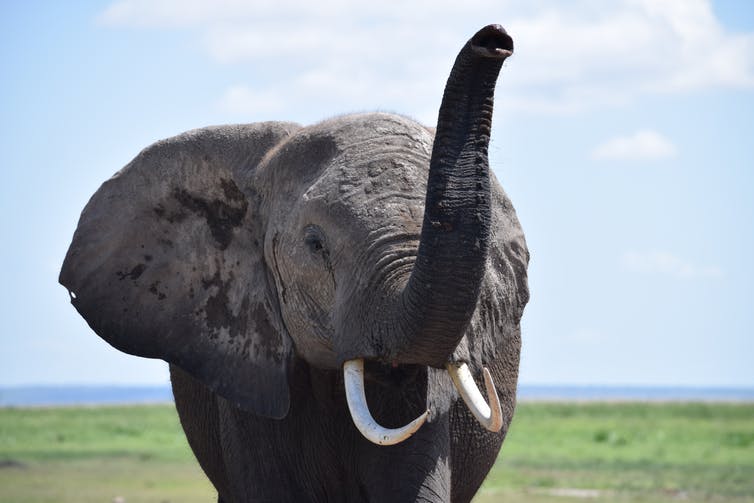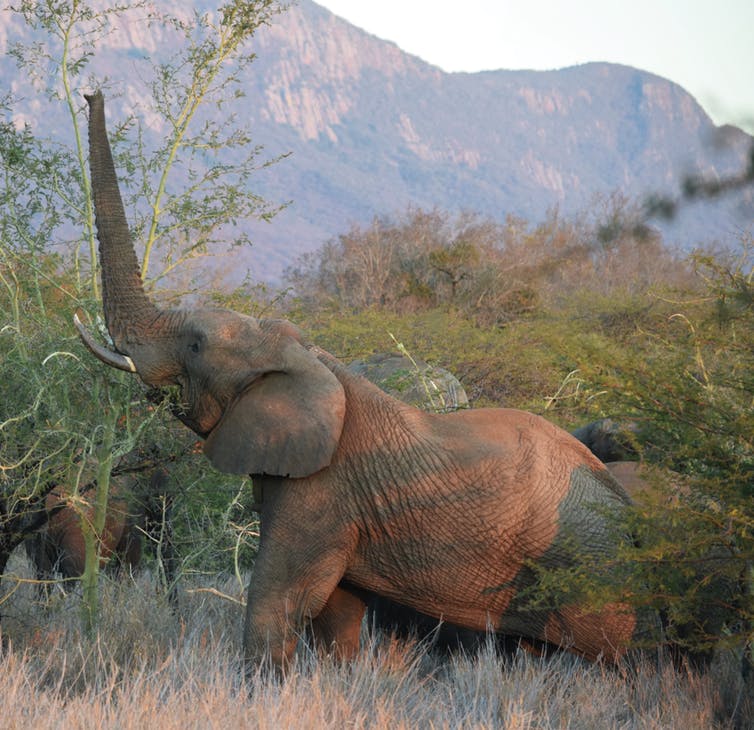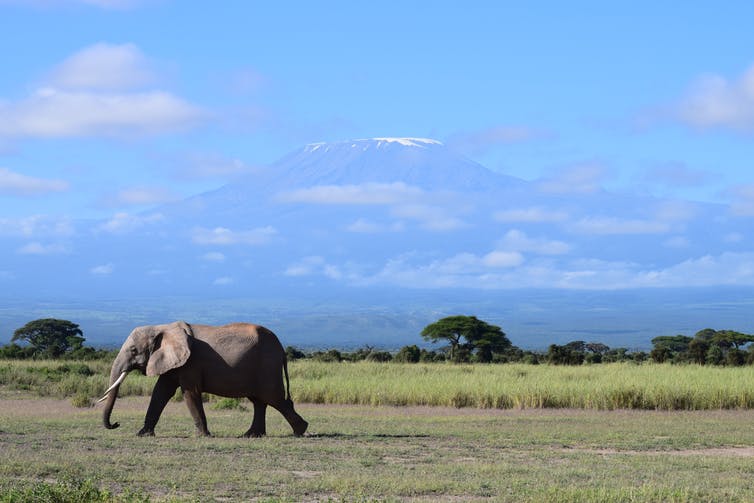Are there too many elephants in Africa? How peaceful coexistence with human communities can help
Soon the weekend, you can relax a bit and talk on non-computer topics: climate change or animal life. For example, how elephants live in Africa ...
The elephant population in Africa dropped dramatically from about a million in 1970 to about 400,000 today . This decline is largely due to the hunt for their ivory tusks. At its peak in 2011, poaching claimed 36,000 elephants a year, or one every 15 minutes .
Many of us are familiar with these statistics due to the actions to stop the sale of ivory. But with our attention to poaching, there is perhaps a more serious threat to African elephants. At a time when the elephant population began to collapse, the human population in Africa grew rapidly. The number of people living in Africa doubled after 1982, reaching a billion in 2009, and is expected to double again by 2050.

Fig_1. Although poaching poses a great threat to elephants, fragmentation of their habitat is less often discussed.
To feed and accommodate this growing population, natural habitats were separated by roads and railways, and all sites were converted into farmlands and settlements. As a result, African elephants were wedged into small and even more isolated land areas. It is very possible that the future of all African elephants will resemble what is currently observed in South Africa.
Here, elephants are mostly enclosed in small fenced reserves, separated by large, man-dominated landscapes. Elephants can not disperse from these reserves, but in their relative security within them is seen an increase in their density. So much so that in sharp contrast to the description of the “extinction of elephants” to which we are accustomed, some believe that there are too many elephants in the reserves of South Africa.
Excessive elephants?
Elephants play a crucial role in the African savannah ecosystems as seed spreaders. Their manure processes valuable nutrients and transfers them to trees, supporting the savannah matrix of forests and pastures and providing biodiversity.
However, for a long time, high density of elephants can reduce forest cover, reducing forest and expanding grass habitats . It can threaten stray species such as the black rhino and antelope, for which trees serve as food and shelter.
Managing elephants to prevent habitat change and biodiversity conservation has a long history. The culling programs continued until the end of the 20th century and ended in the Kruger National Park only in 1994. Shooting remains the “last resort” for controlling elephants in South Africa, but recently there have been calls to resume shooting in Botswana .

Pic_2. Eating acacia (acacia xanthophloea) by an elephant - this tree species has a strong influence on the high density of elephants.
Currently, shooting is largely replaced by non-lethal approaches, including moving elephants to other areas and using contraceptives to reduce fertility.
However, all administrative invasions cause a certain stress in elephants. There is always a small risk that the use of anesthetics and hormonal contraceptives can change the behavior of elephants .
The main question regarding the future of African elephants is whether we are ready to allow them to exist only where they are easy to control. If so, then we need more research to understand the most effective and ethical ways to control elephants. If not, then the answer may be securing for elephants a larger space next to human settlements.
Save or share
It comes down to an old discussion - save land or share it. Land conservation means the separation of primitive habitats of wild animals from areas of human activity, while land sharing implies the preservation of biological diversity within an area shared by humans. But which is better for nature conservation?
South Africa shows us that land saving means for elephants costly, constant monitoring in densely populated reserves. An alternative approach to land division gives elephants greater access to the natural landscapes of Africa, but relies on coexistence between people and elephants.
Currently, land use systems outside Africa’s national parks and reserves are unsustainable. The interaction of man and elephant can threaten the lives of both parties, but there are strategies that promote coexistence.
All of them are based on the understanding that there should be clear benefits for people to share the territory with elephants. Revenues from tourists who pay to see elephants can provide direct employment, but educational programs are also needed to help people understand how elephants benefit the entire ecosystem.

Fig_3. In Amboseli, Kenya’s National Park, elephants share more than 80% of their livestock with livestock and farmers.
Vital activity outside of farming should be encouraged to reduce the burden on the habitat and wildlife, while ensuring stable income in a changing environment. Sound land use and planning should ensure the protection of elephants' vital habitats.
Groups across Africa are already working on solutions that can provide this. Along with tourism, there were projects that brought income to elephants without harming them or the environment, such as the production of paper and gifts from elephant dung .
Save the Elephants, a charitable organization, telling local children about the benefits of living in harmony with elephants , and organizations such as the Amboseli Ecosystem Trust began working with conservationists, politicians and local communities to plan how to live together.
The division of land between people and elephants will depend on the nature of cooperation between governments, conservation groups and local communities. If people want for African elephants more than content in heavily managed reserves, then you need to consult with everyone. Only then can we hope for the peaceful coexistence of people and elephants.
')
Source: https://habr.com/ru/post/442858/
All Articles